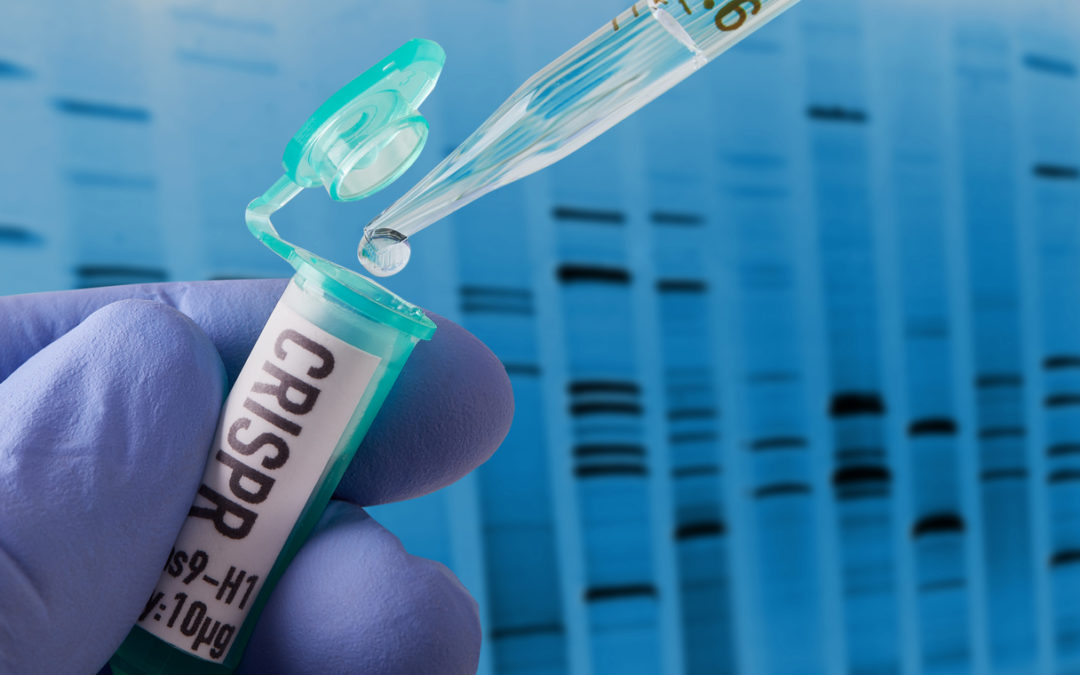One of the most recent developments in the field of genetics is called genome editing. This group of scientific techniques allows for the addition, removal, or modification of DNA. CRISPR is a method for genome editing that has gained popularity as it is considered to be the fastest, cheapest, and most accurate of the available options. For the most part, genome editing has not yet been used in humans, as there is substantial concern by the scientific community that both the technology and the ethical framework are not at a point where this technology can be safely applied. However, this issue gained significant media attention in 2018 when it was announced that a scientist in China used genome editing to alter the embryonic DNA of twin girls to make them resistant to the HIV virus. Since then, questions surrounding the application of this technology in humans have continued to build.
One potential future use of embryonic genome editing would be to alter the DNA of embryos prior to implantation to prevent the transmission of genetic diseases. Here we explore how this potential application compares to the current technique of preimplantation genetic testing (PGT) and what issues must be addressed before embryonic genome editing would be a viable option for couples seeking to have a baby.
How Does Embryonic Genome Editing Compare to Preimplantation Genetic Testing?
PGT involves the biopsy of potential embryos to determine if they carry a mutation for the genetic disease in question. Only embryos that are free of the genetic mutation associated with that disease are implanted. The process substantially reduces the risk for a couple to have a baby with a known hereditary condition by testing and selecting unaffected embryos. This process does not, however, address those embryos that have the disease-causing mutation. These embryos are typically discarded with the current process.
While the technology behind PGT is still relatively new, it has been routinely used in fertility clinics for almost three decades. There is a growing body of literature suggesting that In vitro fertilization (IVF) with PGT is a safe and effective technique to help couples with a history of a hereditary condition avoid passing that condition on to a child. Additionally, PGT is widely available in fertility clinics today with an ever increasing list of conditions that can be addressed using this technology. For couples with a personal or family history of a genetic disease that are currently considering a pregnancy, PGT is the most efficacious means of ensuring an unaffected pregnancy.
In principle, embryonic genome editing would take the basic premise of PGT one step farther. Couples would still need to undergo IVF to achieve a pregnancy. Once viable embryos were retrieved, those embryos would be tested for the mutation known to cause the genetic disease in that family. Instead of being discarded, embryos that were identified as having the disease-causing mutation could then undergo genome editing, altering that embryo’s DNA so that it would no longer be at risk of the disease. That alteration would be permanent, and assuming the embryo resulted in a child, would be subsequently passed down from generation to generation. This is what is known as germline gene editing. The great advantage of this technique would be the availability of significantly higher numbers of embryos for implantation, hypothetically increasing the odds of a successful and healthy pregnancy.
It is important to note that germline genome editing is currently illegal in the United States and not supported by the scientific community. As such, there have been no studies to date of the safety or efficacy of this technique, and it is therefore not clinically available to patients.
What Must Happen for Embryonic Genome Editing to Become Clinically Available?
Given the tremendous potential for embryonic genome editing to cure genetic diseases and its ability to eliminate the transmission of these diseases from one generation to the next, there is substantial interest in developing a version of this technique for clinical use. While the potential for therapeutic application is great, concerns about safety are real. The risk of creating an edit in the wrong place and generating embryos where some cells have the edit and some do not are unknown, so most researchers agree that this technology should not be made clinically available until its safety is demonstrated through replicable research. One of the most important milestones in working towards that goal is successful research endeavors in to somatic genome editing, or altering DNA in non-reproductive body cells of an individual that already has a disease in order to help treat that disease. Preliminary research into somatic genome editing is just beginning in the United States with targets in cancer and hereditary blood disorders like sickle cell anemia.
In addition to research, there is a significant need for an open discussion around the ethical use of germline genome editing. With the potential to alter the DNA of an embryo, particularly in a way that is permanent and heritable, critics have raised a number of concerns about when this technology should be used. Safeguards and regulations may need to be enacted to ensure the technology is used in a therapeutic way and not purely for enhancement or personal preference.
Embryonic genome editing has tremendous promise, especially for families with a history of a genetic disease. It will be important to monitor the development of this technology to fully understand how it works and in which situations it will be safe and effective. For now, PGT is a reasonable and reliable option for families with a history of a genetic condition. It is recommended that couples interested in becoming pregnant review all options, including new technologies, with a genetic counselor to determine the best route for them to achieve a pregnancy.

Jessica Greenwood is an independent consultant to Sharing Health Genes. As a licensed genetic counselor and digital health consultant, she works with health-related organizations looking to deliver memorable messages of health in the digital space. Mrs. Greenwood started her career in a clinical role, working for eight years as a preconception and prenatal genetic counselor before transitioning to industry. Mrs. Greenwood completed a year-long certificate program in Digital Health Communication at Tufts University that spearheaded her work in digital health. She now consults with health-related organizations, assisting with the creation and execution of a digital strategy including the development of health literate patient-centered educational materials. Mrs. Greenwood earned a Bachelor of Science degree from North Carolina State University with a minor in Genetics and a Master of Science in Genetic Counseling from the University of North Carolina at Greensboro.
